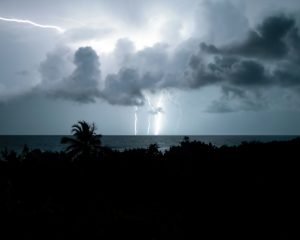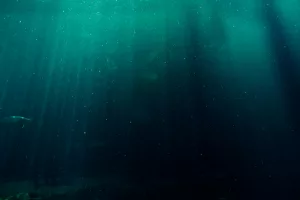Rivers are fascinating natural features that have captivated human curiosity for centuries. Their winding paths and meandering curves are not just random; they are the result of complex interactions between various geological, hydrological, and ecological factors. Understanding why rivers curve and meander involves delving into these intricate processes. Let’s explore the myriad reasons behind the serpentine dance of rivers and how they shape the landscapes we know today. Rivers have always been vital to human civilization, serving as sources of water, food, and transportation. Their meandering paths are not only beautiful but also serve important ecological functions, such as supporting diverse habitats and maintaining the health of ecosystems. The process of meandering is a balance of erosion, sediment transport, and deposition, influenced by the river’s velocity and the landscape through which it flows.
Geological Factors
Rivers are sculpted by the geology of the regions they traverse. The underlying geology plays a pivotal role in determining the course of a river. Heterogeneous geology, characterized by varying resistance to erosion, causes rivers to bend and change directions. Hard rock formations resist erosion, while softer materials yield more easily, creating a dynamic landscape. For instance, a river flowing through a terrain with alternating layers of limestone and shale will erode the softer shale faster, leading to meandering patterns as it follows the path of least resistance.
Case Study: The Colorado River
The Colorado River is a classic example of how underlying geology influences a river’s course. As it carves through the Grand Canyon, the river encounters different rock layers. The softer sedimentary rocks erode more quickly than the harder igneous and metamorphic rocks, resulting in the dramatic meanders and cliffs that define the canyon today. The Grand Canyon itself is a testament to the power of water over millions of years, as the river has carved its path through the rock, exposing layers that tell the geological history of the region.
Geological shifts such as tectonic activity can also influence river paths. Earthquakes can alter the landscape by raising or lowering land, which in turn impacts river flow. The Indus River in Pakistan, for example, has shifted its course due to tectonic plate movements over centuries.
Erosion and Deposition
The interplay of erosion and deposition is fundamental to river meandering. As water flows, it erodes the outer bends of a river (cutbanks) and deposits sediment on the inner bends (point bars). This continuous cycle gradually reshapes the river’s course.
Factors Influencing Erosion and Deposition
- Water Speed and Turbulence: Faster water has more energy to carry sediment, enhancing erosion on the outer banks. Conversely, slower water on the inside bends allows sediment to settle. A practical example of managing this is the Rhine River in Europe, where efforts have been made to control its flow speed through engineering works to reduce erosion and improve navigation.
- Sediment Load: The type and amount of sediment carried by a river affect how dramatically it meanders. Rivers with heavy sediment loads, like the Mississippi, often exhibit pronounced meanders. Sediment management is crucial, as excessive sediment can lead to problems for aquatic life and human activities.
- Channel Shape: Wide, shallow channels are more prone to meandering than narrow, deep ones due to differences in water flow patterns. Efforts to modify channel shape for navigation or flood control must consider the long-term impacts on river meandering and ecology.
Practical Insight: Managing Erosion and Sedimentation
Understanding these processes is crucial for managing river systems. For example, engineers might reinforce riverbanks with vegetation or artificial structures to reduce erosion in vulnerable areas. In agricultural regions, managing sediment load through practices like cover cropping can help maintain river health. Furthermore, riparian buffer zones—strips of vegetation along riverbanks—can effectively reduce sediment and nutrient runoff, promoting water quality and habitat stability.
Velocity and Discharge
The velocity and discharge of a river determine its erosive power. Faster-flowing rivers tend to erode more aggressively, creating sharp meanders, while slower-moving rivers have gentler curves.
Calculating River Discharge
Discharge is calculated as the product of a river’s cross-sectional area and its velocity. This measure gives insight into the river’s capacity to transport sediment and reshape its banks. For example, during the rainy season, a river’s discharge increases, intensifying erosion and potentially altering its course. In practice, monitoring discharge can help predict flood events and guide the design of flood control systems.
Impact of Seasonal Variations
Seasonal changes can drastically affect river velocity and discharge. For instance, snowmelt in spring can cause significant increases in river flow, leading to higher erosion rates and potential changes in river paths. Conversely, drought conditions can reduce flow and deposition, impacting aquatic habitats and water availability.
Vegetation and Human Intervention
Vegetation along riverbanks plays a critical role in stabilizing a river’s course. Plant roots anchor soil, reducing erosion and promoting ecological health. However, human interventions, like straightening rivers for infrastructure projects, can disrupt these natural processes.
Balancing Human Needs and Natural Processes
While straightening rivers can facilitate navigation or flood control, it often leads to unintended consequences. Increased erosion downstream or loss of habitat are common issues. A balanced approach that incorporates green infrastructure—such as planting native vegetation—can help maintain the river’s ecological integrity while meeting human needs. In the Netherlands, the “Room for the River” project exemplifies this balance by creating floodplains and relocating dikes to allow rivers to flood safely, reducing risk while preserving natural landscapes.
Case Study: The Kissimmee River Restoration
The Kissimmee River in Florida was straightened in the 1960s to manage flooding, but this led to significant ecological degradation. A massive restoration project has since been underway to restore its natural meanders, demonstrating that reintroducing natural river patterns can improve water quality and biodiversity.
Climate and Seasonal Changes
Climate and seasonal changes significantly impact river dynamics. Seasonal variations in precipitation and temperature influence river flow, erosion, and sediment deposition.
Example: The Nile River
The annual flooding of the Nile, driven by seasonal rains in its upstream catchment areas, historically deposited nutrient-rich silt along its banks, supporting agriculture. Understanding such patterns is essential for effective river management and planning. However, modern interventions like the Aswan High Dam have altered this natural flooding cycle, impacting the delta’s ecosystems and agriculture.
Human Impact on River Dynamics
Human activities have dramatically altered river systems worldwide. Urbanization, deforestation, and dam construction can change a river’s flow and sediment load, affecting its natural meandering patterns.
Urbanization and River Health
Urban areas increase surface runoff, which can lead to higher river discharge and increased erosion. Implementing stormwater management systems, like green roofs and permeable pavements, can mitigate these impacts by reducing runoff and promoting groundwater recharge. Cities like Portland, Oregon, have successfully integrated these green infrastructure solutions to manage stormwater sustainably.
Dams and River Dynamics
Dams significantly alter river flow and sediment transport. While they provide benefits like hydroelectric power and water storage, they can disrupt natural sediment cycles and reduce downstream biodiversity. The removal of obsolete dams, such as the Elwha Dam in Washington State, has shown how restoring natural flows can revive river ecosystems and reconnect habitats.
Technological Advances in River Study
Advancements in technology have enhanced our understanding of river dynamics. Tools like remote sensing and GIS (Geographic Information Systems) allow scientists to model river systems and predict changes over time.
Practical Applications
- Flood Prediction: Using satellite imagery and hydrological models, researchers can forecast flood events, helping communities prepare and reduce damage. Early warning systems in countries like Bangladesh have been crucial in reducing flood-related casualties and economic losses.
- Habitat Restoration: Technology aids in designing projects that restore natural meanders and improve habitat quality for aquatic species. For example, drone technology is increasingly used to monitor habitat conditions and assess the success of restoration efforts.
Common Mistakes in River Management
Despite advances in understanding, mistakes in river management still occur. Ignoring natural processes or prioritizing short-term gains over long-term sustainability can lead to increased erosion, habitat loss, and other ecological problems.
Avoiding Common Pitfalls
- Respect Natural Patterns: Recognizing the importance of natural meanders and flow patterns in planning projects can reduce negative impacts. For instance, allowing rivers to maintain natural floodplains can mitigate flood risks while supporting biodiversity.
- Community Involvement: Engaging local communities in river management fosters stewardship and ensures that interventions meet both ecological and social needs. Programs that involve local stakeholders often lead to more sustainable and accepted outcomes.
The Future of River Systems
As climate change and human activities continue to alter river systems, understanding and managing meanders becomes even more critical. Balancing human needs with natural processes will be essential for the sustainability of these vital watercourses.
Looking Ahead
Efforts to enhance river resilience should focus on adaptive management strategies that accommodate changing conditions. Monitoring river health, restoring natural floodplains, and promoting sustainable land-use practices will be key components of future river management. Collaborative efforts across borders, such as those seen in the management of the Danube River, highlight the importance of international cooperation in addressing shared water challenges.
In exploring why rivers curve and meander, we’ve touched upon the intricate dance between natural forces and human influences. By appreciating and respecting these processes, we can better manage and preserve the rivers that sustain life across the globe. The future of our rivers depends on our commitment to understanding and integrating both natural and human factors in ways that promote ecological health and resilience.



